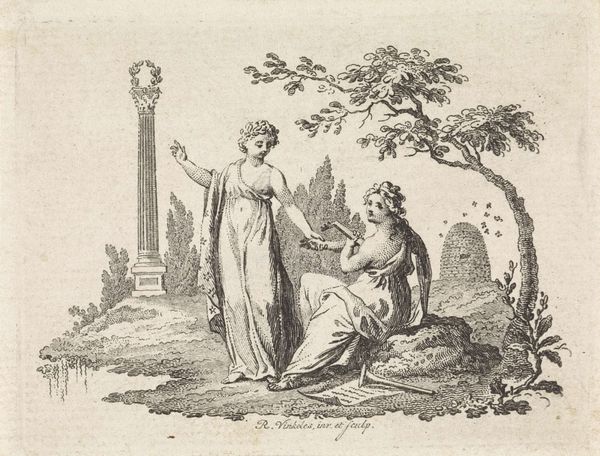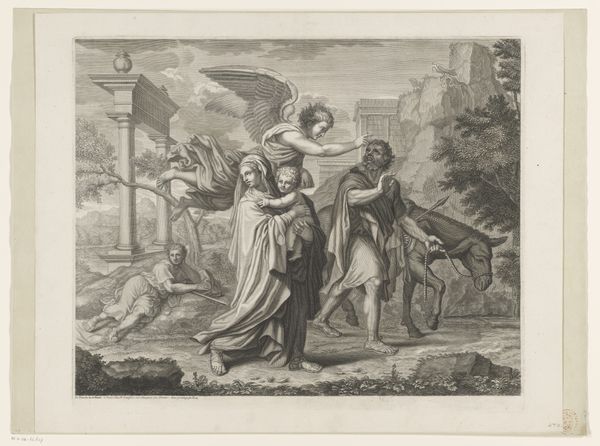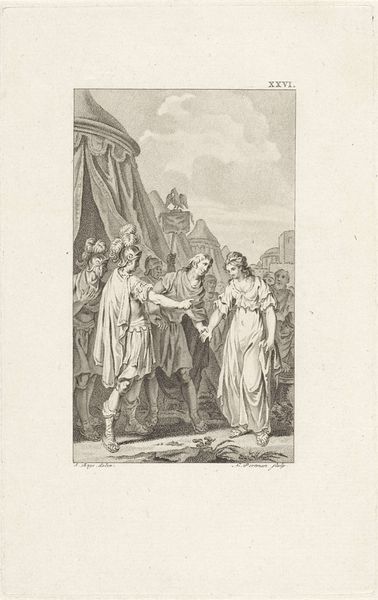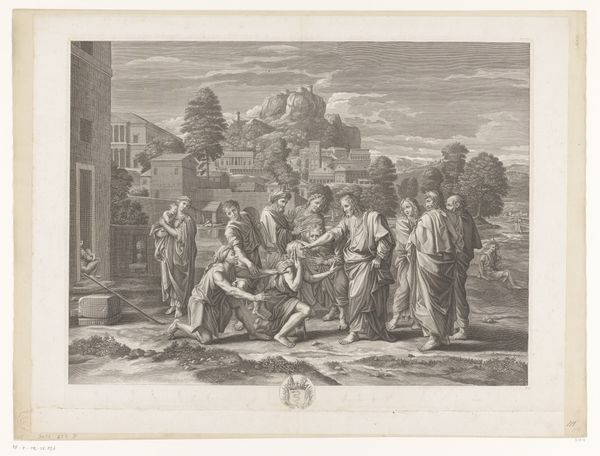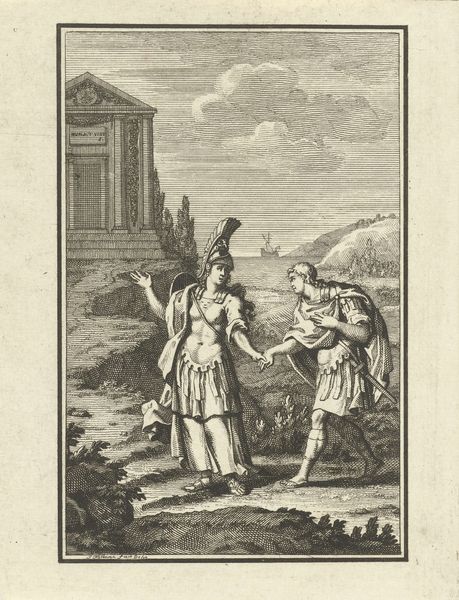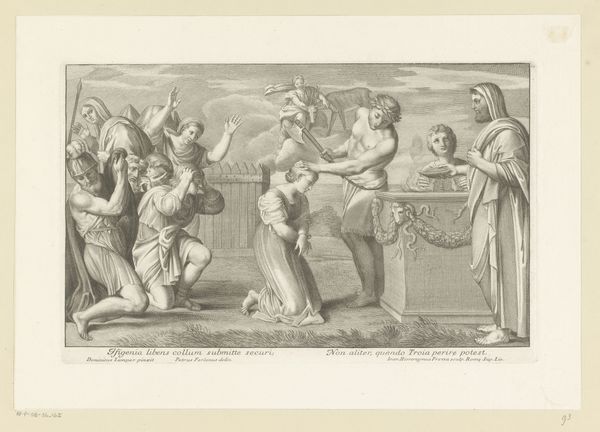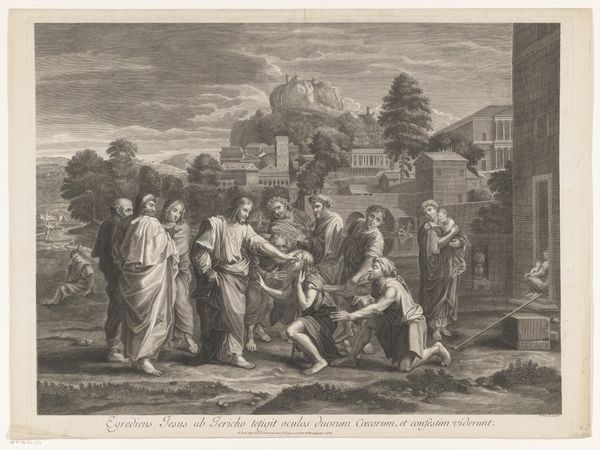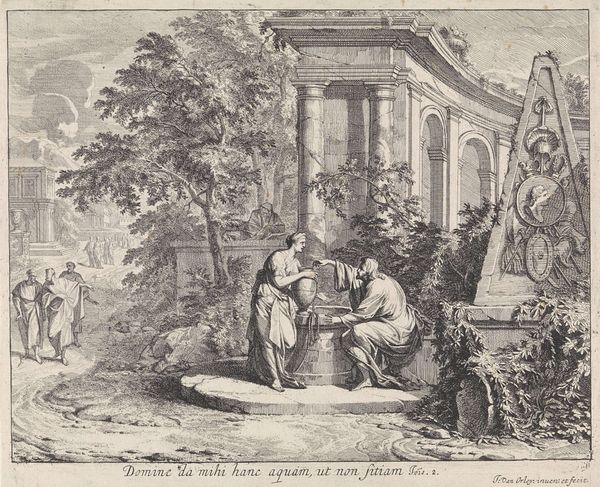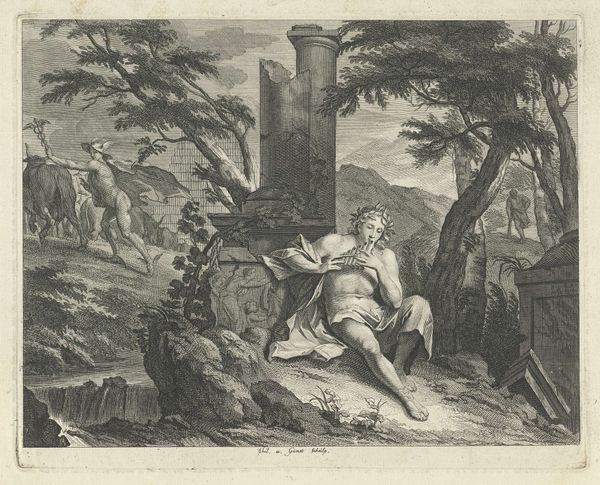
Dimensions: height 70 mm, width 117 mm
Copyright: Rijks Museum: Open Domain
Curator: Let's take a look at "Vijf vrouwelijke personificaties bij een grafmonument," or "Five Female Personifications at a Grave Monument," an etching and engraving by Reinier Vinkeles, created in 1766. It’s currently held in the Rijksmuseum. Editor: My first impression is of theatrical sorrow. The stark, clean lines create this atmosphere of stylized grief, like figures posed on a stage around this ornate tomb. Curator: Yes, Vinkeles was deeply embedded in the artistic and intellectual circles of his time. Printmaking played a key role in disseminating ideas of virtue, citizenship, and, of course, mourning the loss of important figures. The baroque influence is very evident, especially in how he stages this scene to maximize emotional impact. Editor: Right, and those stark lines you mention are crucial. It's etching and engraving, techniques rooted in the craftsman's skilled labor, forcing precision. They highlight the almost manufactured nature of these idealized emotions – these aren’t simply figures weeping, they are performing sorrow, offering commentary about mortality. You have to wonder how this imagery, multiplied through print, served its varied audiences? Curator: Precisely. Consider the historical context. This was the era of Enlightenment ideals, yet also of entrenched social hierarchies. Art, especially printmaking, played a vital role in propagating acceptable models of behavior, particularly concerning grief and remembrance. These figures aren't just mourning; they’re modeling proper public mourning, appropriate for the gaze of wider society. Editor: What stands out is the almost palpable sense of control, down to the way Vinkeles handles light and shadow using the precise application of these etched and engraved lines. It underscores how deeply constructed notions of death and memory truly are. Every choice, the angle of the cross, the open book… it's deliberately crafted and placed. It’s like manufacturing emotions. Curator: In revisiting this work, I'm struck again by the interplay of personal grief and public performance—Vinkeles's orchestration of universal ideals through this very specific, staged setting speaks volumes about 18th-century culture. Editor: I see an artisan wrestling materials into something profound about societal expectations, about the controlled representation of very human emotions in the public arena. It’s very complex to unpack.
Comments
No comments
Be the first to comment and join the conversation on the ultimate creative platform.
